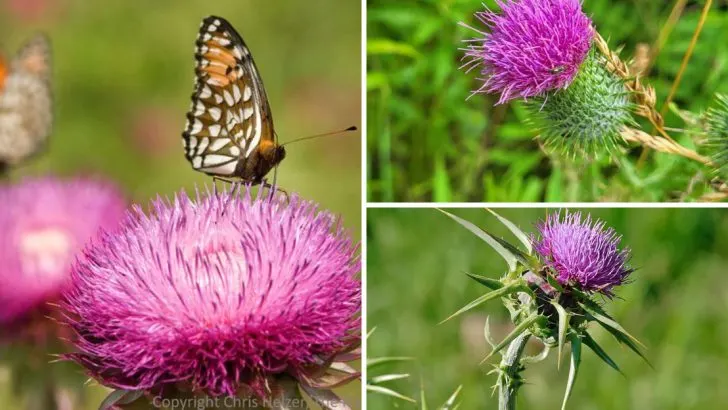Bull thistle doesn’t exactly have a warm and fuzzy reputation. With its spiny leaves and towering, prickly stems, it’s often seen as something to yank out rather than nurture. But once you look past its rough exterior, there’s actually a lot going on with this hardy plant—and much of it is surprisingly useful.
From supporting pollinators to offering unexpected medicinal value, bull thistle has more to offer than most people give it credit for. It’s not the kind of plant that demands constant attention, and it tends to thrive where others struggle. If you’re curious about what this misunderstood thistle brings to the table, here are 15 solid reasons it might actually earn a place in your garden.
Pollinator Magnet
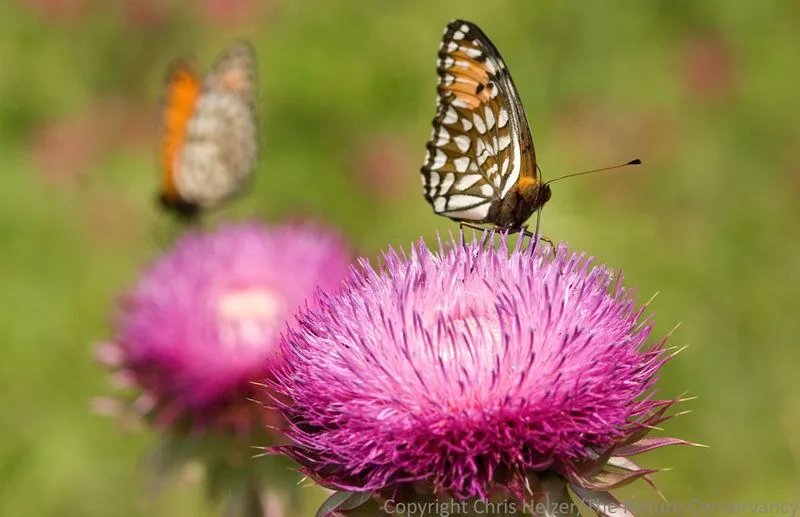
Amidst the vivid blooms, bull thistles play host to a charming spectacle of buzzing bees and fluttering butterflies. These prickly plants are a beacon for pollinators, ensuring your garden hums with life.
Their ability to draw in such a variety of creatures helps pollinate other plants, boosting your garden’s productivity. By welcoming these visitors, your garden becomes a vital hub of biodiversity.
Allow the bull thistle to stand tall and watch your garden transform into a lively tableau of nature’s finest workers, all thanks to this remarkable plant.
Bird Sanctuary

The bull thistle offers a delightful buffet for birds, particularly finches, who relish its seeds. Imagine your garden alive with the flurry of wings and cheerful chirping, providing a sanctuary for your feathered friends.
These plants not only nourish but also offer a safe haven for birds to perch and preen. As the seasons change, the bull thistle continues to support local wildlife, making it a cornerstone of any nature-friendly garden.
Soil Protector
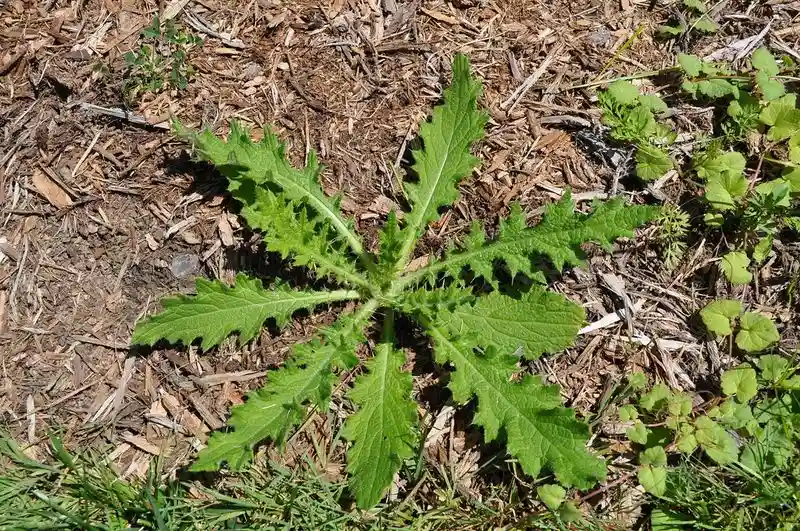
With roots that dig deep into the earth, bull thistles play a crucial role in soil stabilization. Particularly on slopes, these plants anchor the soil, minimizing erosion and maintaining landscape integrity.
Their presence helps conserve valuable topsoil, which is essential for sustaining other plant life. Incorporating bull thistle into your garden’s ecosystem can thus prevent soil degradation over time, ensuring a robust and healthy plot.
Medicinal Uses
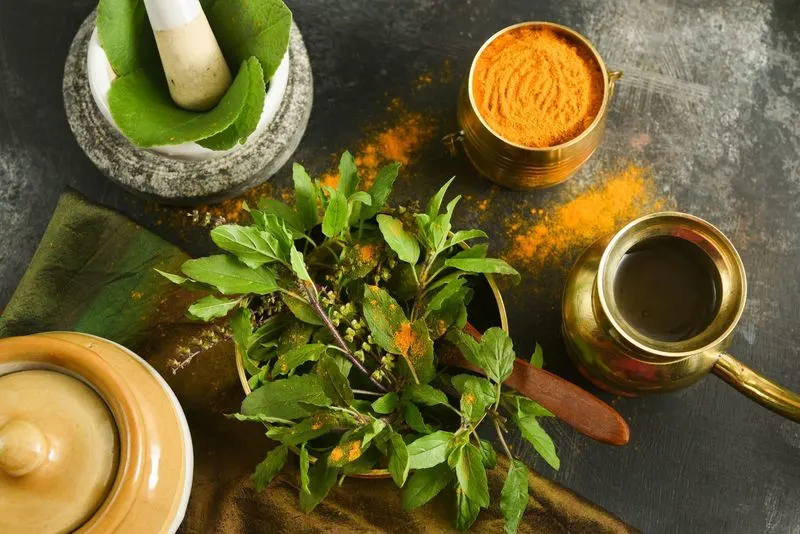
Traditionally, bull thistle has been valued in herbal medicine for its therapeutic properties. Healers have long employed its leaves and roots to treat a variety of ailments, from digestive issues to inflammation.
Incorporating bull thistle into medicinal preparations can bring natural healing into your home. Its legacy in folk medicine speaks to its enduring utility and potential health benefits.
Natural Dye Source

The vibrant hues of bull thistle flowers are more than just a visual delight; they serve as a source of natural dye. Creative artisans utilize these pigments to produce eco-friendly, colorful textiles.
By cultivating bull thistle, you’re not only enhancing your garden’s aesthetics but also tapping into a sustainable resource for natural dyes. This practice fosters an appreciation for traditional crafts and eco-conscious living.
Wildlife Habitat
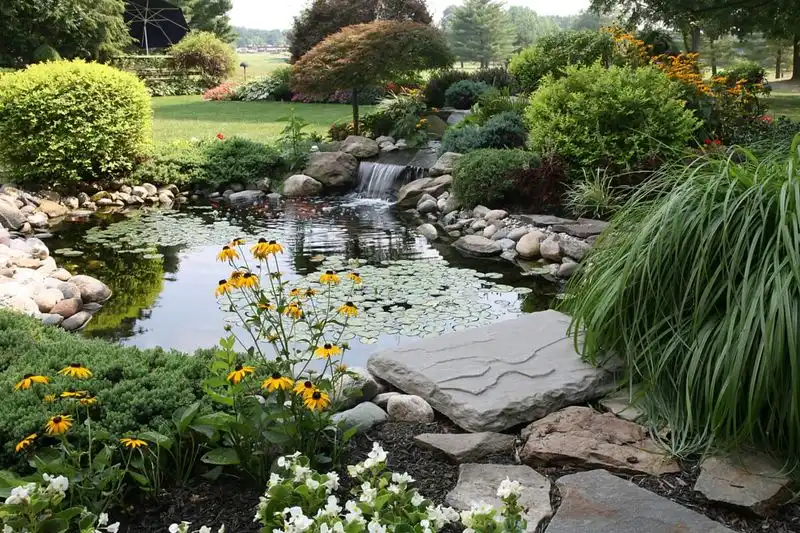
Bull thistles serve as bustling hubs of activity, supporting a diverse array of wildlife. From the smallest insects to birds and small mammals, these plants provide essential resources.
The thistle’s structure offers shelter and food, creating a miniature ecosystem within your garden. Embracing bull thistle supports biodiversity, enriching the natural tapestry of your outdoor space.
Nutrient Recycling
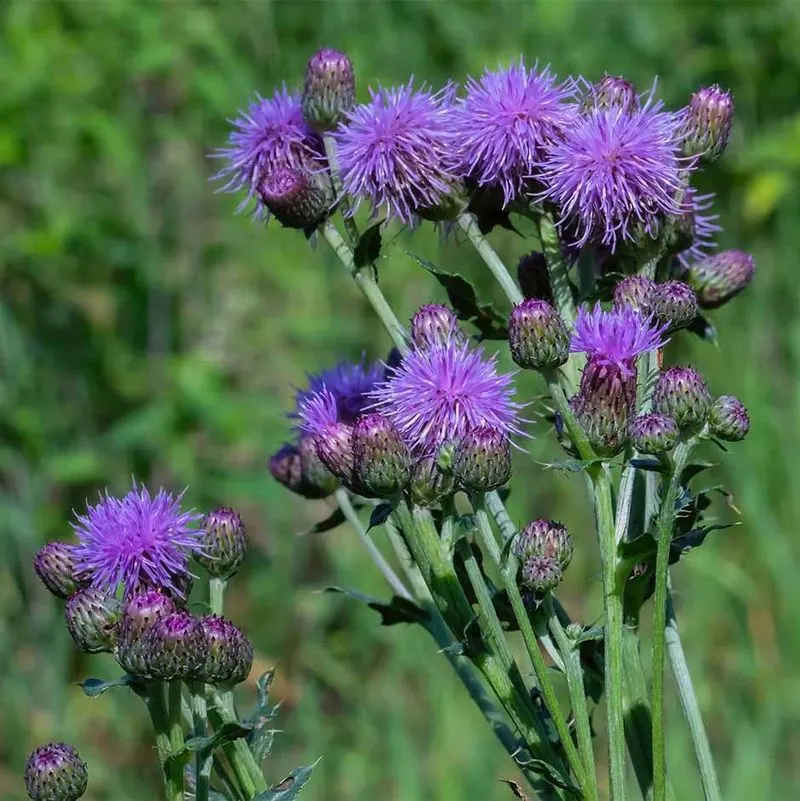
As bull thistles complete their life cycle, they contribute to nutrient recycling in the garden. Their decay returns valuable nutrients to the soil, enhancing its fertility.
This natural process supports the growth of other plants, creating a self-sustaining environment. By allowing bull thistles to decompose naturally, you’re participating in a cycle that nurtures your garden’s health.
Windbreak Barrier
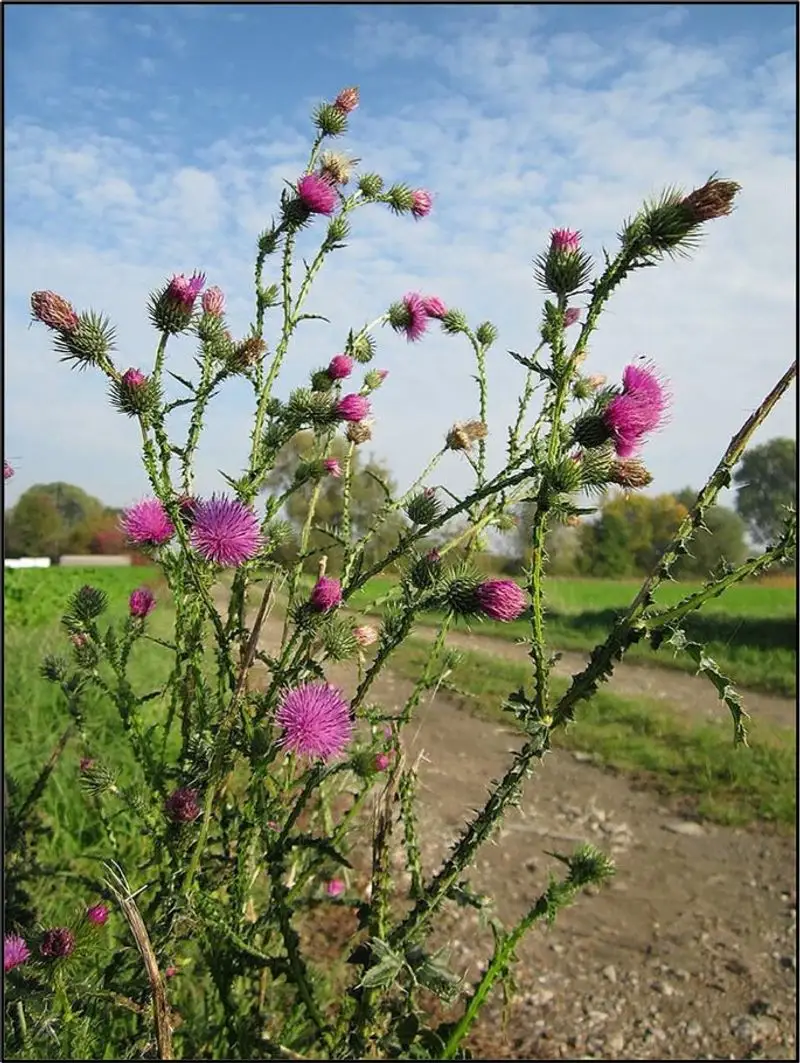
In gardens susceptible to strong winds, bull thistles act as natural windbreaks. Their sturdy stems and dense foliage provide protection to more delicate plants.
By planting bull thistle strategically, you create microclimates that shield your garden from harsh weather, enhancing its resilience. This simple addition can transform the dynamics of your garden’s environment.
Aesthetic Appeal
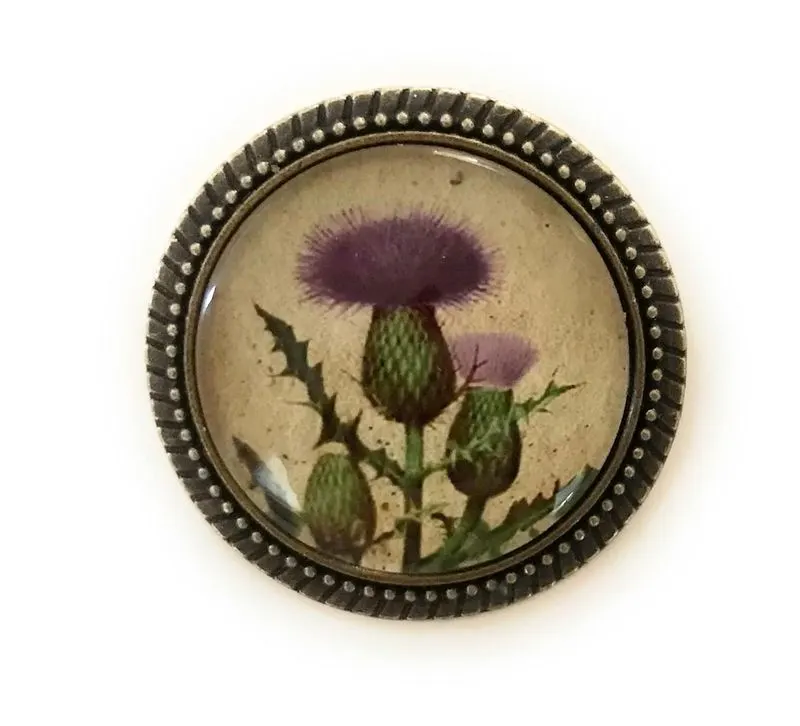
With striking purple blooms and a unique architectural form, bull thistles add aesthetic appeal to any garden. Their dramatic presence can serve as a focal point in landscape design.
These plants complement a variety of styles, from wild and rustic to structured and modern. Their beauty invites admiration and enhances the visual harmony of your garden space.
Pest Deterrent
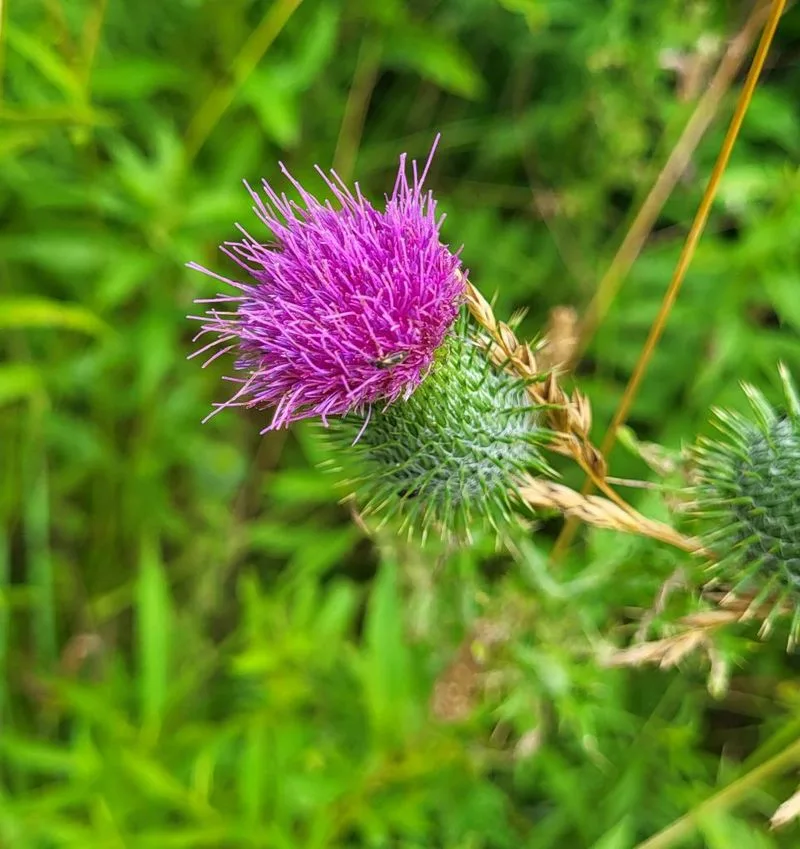
Bull thistles naturally deter certain pests with their prickly nature, protecting more vulnerable garden residents. This makes them an excellent companion for vegetables and flowers alike.
Their presence can reduce the need for chemical pesticides, promoting a healthier, more organic gardening approach. By incorporating bull thistles, you’re investing in a sustainable pest management strategy.
Edible Parts
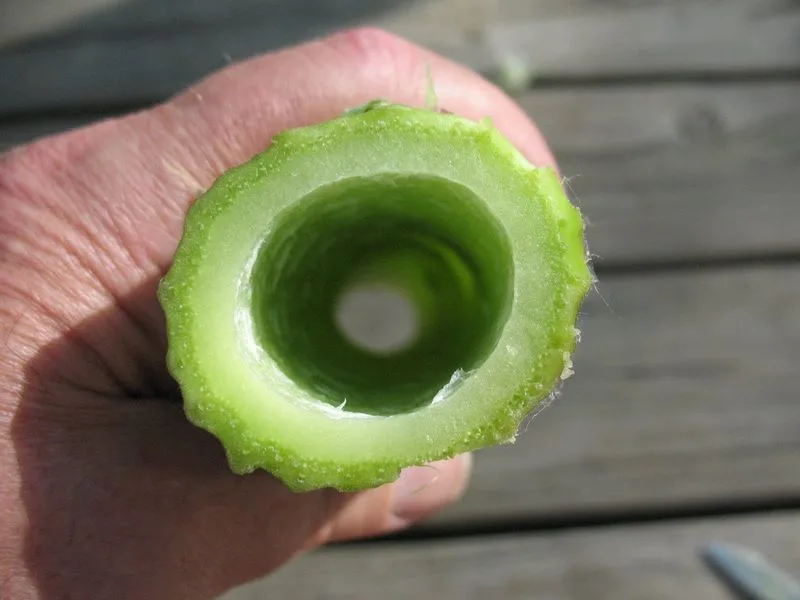
Parts of the bull thistle, including young leaves and roots, are edible and have been used in traditional cuisines. They offer a unique addition to salads and herbal teas.
Exploring these culinary uses opens a world of flavors and textures, connecting you with time-honored cooking traditions. It’s an adventurous endeavor that enhances your garden’s bounty.
Symbolic Meaning
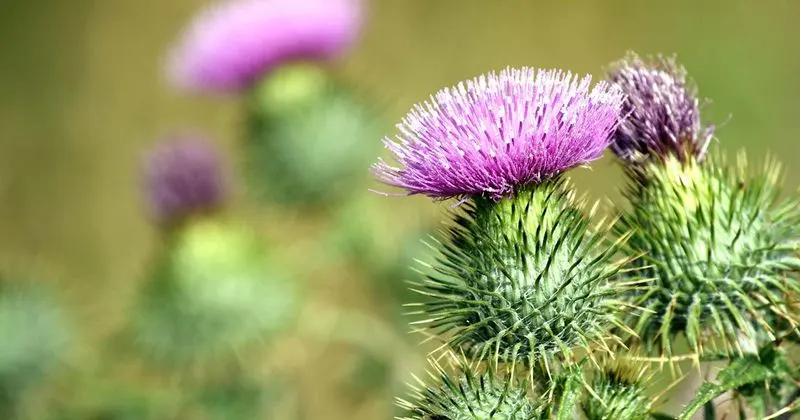
Beyond its physical attributes, the bull thistle carries symbolic meaning of resilience and endurance. This association stems from its hardy nature and ability to thrive in diverse conditions.
Integrating bull thistle into your garden is a tribute to these qualities, serving as a reminder of nature’s tenacity. Its symbolism enriches the narrative of your garden, adding depth and character.
Eco-Friendly Gardening
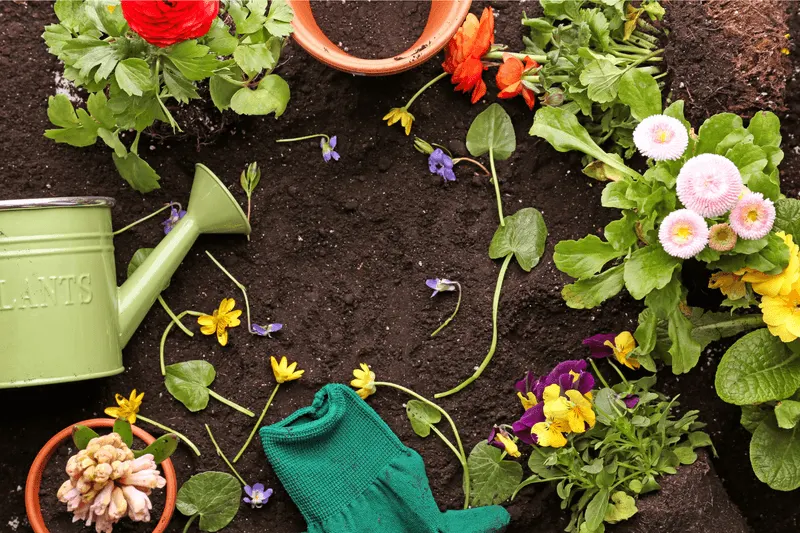
Embracing bull thistle aligns with eco-friendly gardening practices, as they require minimal intervention and support biodiversity. Their presence encourages a balanced ecosystem.
In a world increasingly focused on sustainability, these plants represent a step towards more responsible gardening. By choosing bull thistle, you contribute to environmental stewardship.
Seasonal Interest
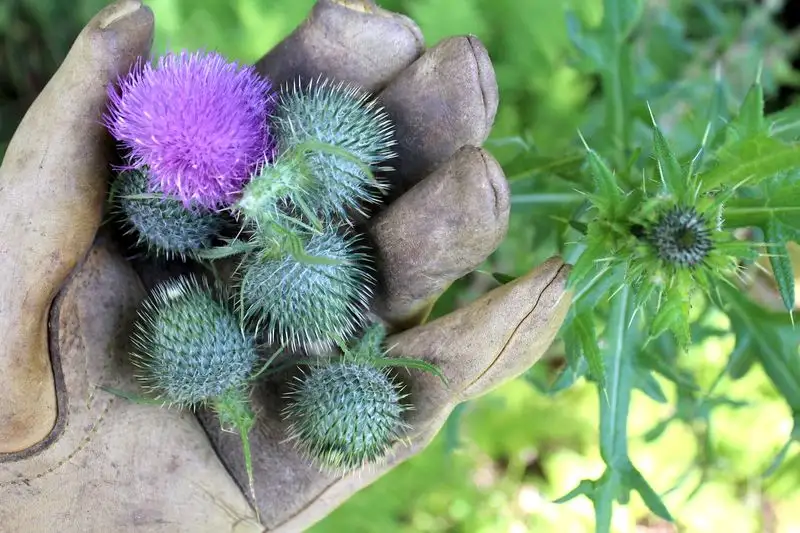
Bull thistles offer seasonal interest, changing with the seasons to bring dynamic visuals to your garden. From vibrant summer blooms to striking silhouettes in winter, they captivate throughout the year.
This shifting beauty ensures that your garden remains engaging and diverse, regardless of the season. It’s a testament to the bull thistle’s versatility and enduring charm.
Historical Significance
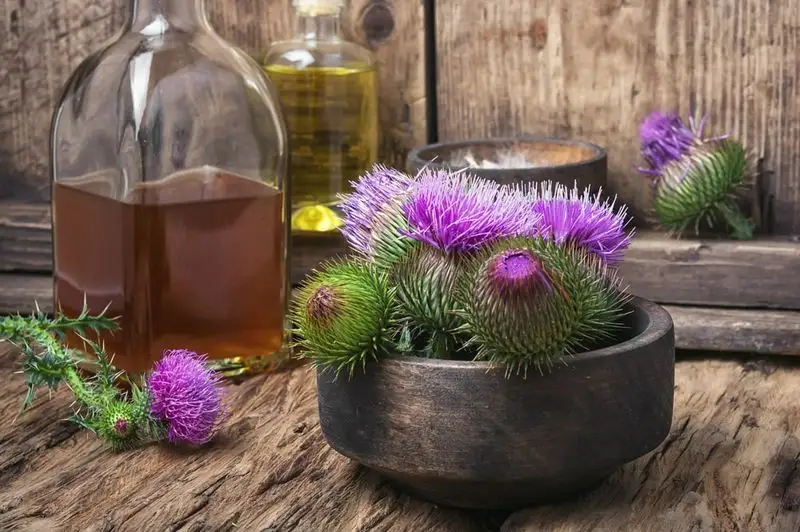
Bull thistle has a rich history, having been cultivated and valued in gardens for centuries. Its inclusion in historical herbals speaks to its enduring utility and appeal.
This connection to the past offers a sense of continuity, linking modern gardeners to time-honored practices. The bull thistle’s historical significance adds a layer of intrigue to your garden’s story.

